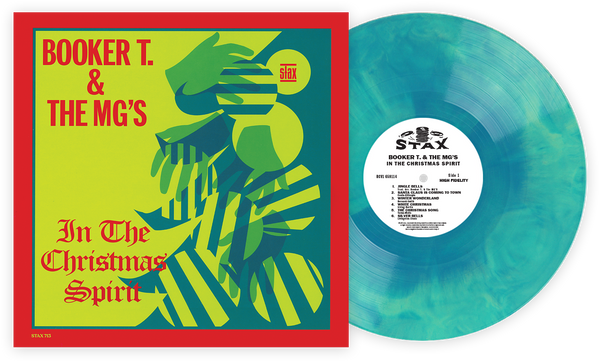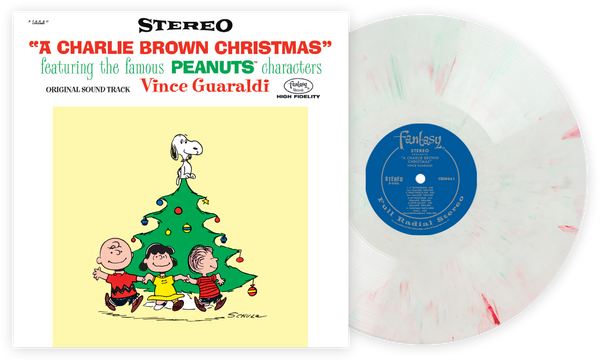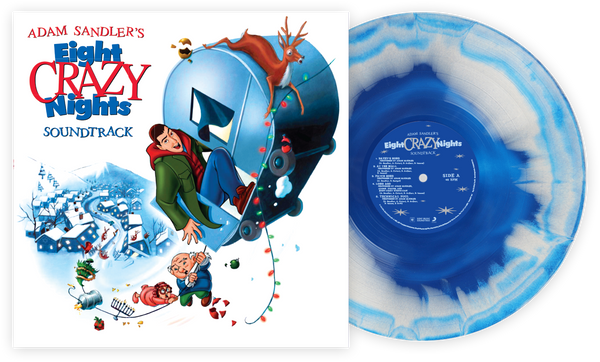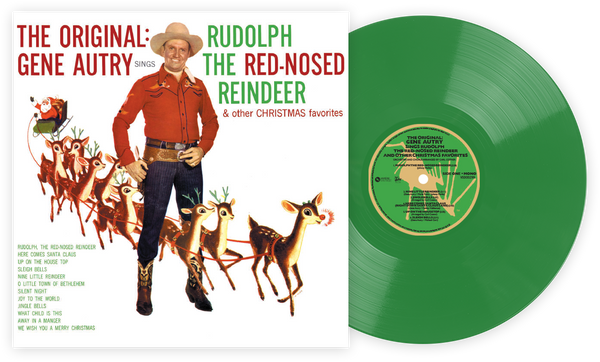Tidak boleh menjadi Santa: Natal Bob Dylan di Hati
An Exploration Of One Of The Legend's Most Maligned Albums
Bob Dylan menyanyikan lagu-lagu Natal. Ini adalah jenis premis yang jelas dan monoton yang bisa diharapkan dari ruang penulis Saturday Night Live pada tahun 1970-an, kemudian sekali lagi pada tahun 1980-an, dan sekali lagi dengan putus asa yang menyerah di tahun 1990-an. Gagasan bahwa suara khas penyanyi-penulis lagu ikonik ini menyanyi lagu-lagu ceria seperti "Jingle Bells" dan "Rudolph The Red Nosed Reindeer" tampaknya memang berasal dari komedi sketsa yang murah.
And yet, there it was, staring back at us from the Wal-Mart CD racks in 2009 with all the intolerable cruelty of a mid-career M. Night Shyamalan twist. By all rights, it shouldn’t exist, a joke wrongly willed into our world by some cosmic mishap. But by golly, Christmas In The Heart is realer than Santa Claus. ‘Tis a seasonally sound selection of fifteen traditional and popular songs sung by the same guy who brought you stunners “Knockin' on Heaven's Door,” “Subterranean Homesick Blues,” and “Tangled Up In Blue,” among numerous others.
Among these Christmastime cuts are ones penned by singing cowpoke Gene Autry, German/Jewish composer Felix Mendelssohn, and Mel “The Velvet Fog” Tormé, each performed as only late period Dylan could. His voice having descended from its once charming nasal signature into something more gravelly and rust colored, he croaks and groans over some downright saccharine sounds befitting the material, from entrenched exemplar “Do You Hear What I Hear?” to less shopworn fare like “Must Be Santa.”
In the latter’s corresponding music video, a long-haired Dylan dons an oversized Santa cap to cavort with joyous holiday revelers in the midst of a most merry house party that soon turns vintage violent, albeit to a wholesome and harmless extent meant for only the softest of laughs. At the end of a mildly dramatic sequence replete with instances of shattered glass, he mugs on the porch alongside none other than Kris Kringle himself. The closing moment is as treacly as a secondhand fruitcake.
By now, Dylan fans are already well used to getting a bit of coal in their stockings. His career is full of unexpected left turns known to alienate or bemuse, including his unapologetic shift from acoustic to electric music in 1965, his public conversion to evangelical Christianity in 1979, and his releasing back-to-back Frank Sinatra tribute albums in 2015 and 2016. While in most cases the hubbub comes as a direct result of his own actions, in others the controversy comes to him. The same year Dylan was quixotically banging out his second set of Ol' Blue Eyes’ crooner standards, the Nobel committee in Stockholm opted to bestow its prestigious annual Literature prize on the unsuspecting septuagenarian, leading armchair experts, creative writing grad students, and community college librarians worldwide to collectively bristle and scoff at the thought.
Even still, Christmas In The Heart was a rickety bridge too far for those less than enamored with Dylan’s output beyond, say, the 1970s. I used to play the opener “Here Comes Santa Claus” as a sadistic goof for unsuspecting company, guaranteeing my spot on the naughty list as I watched their faces turn sour with bewilderment and disappointment. Those unprepared for the straight-faced sincerity of his performance found the execution as savagely unfunny as the imaginary SNL writers room assuredly would. Despite my best efforts, I never could captivate anyone long enough to complete a playthrough of that song, and to this day the album is banned household listening as per my incredibly forgiving wife.
While contemporary pop and rock acts often approach even the more conservative strains of this music with at least some commercial consideration for the modern ear, Dylan’s arrangements seem determined to maintain an old timey feel. In practice, it comes off as cantankerous and crusty, as if Grampa Bob has corralled the children into the living room and forced them at gunpoint to get into the goddamn spirit already.
Thoroughly wrapped in a classic church-and-state patriotic blur, Christmas albums are one of the oddest continuing phenomenons in American music. Mariah Carey, Celine Dion, Kenny G, and Elvis Presley respectively sold millions of copies of their entries into this snowy scene, their wintry songs blanketing radio stations, department stores, and homes alike this time of year. Symphonic rockers Mannheim Steamroller built an entire career out of what is essentially extreme caroling, while Michael Bublé and Josh Groban have all but assured their longevity on the Xmas circuit with their best-sellers. In our house, A Christmas Gift for You from Phil Spector always gets a listen, though not without some residual discomfort over the producer’s non-musical crimes.
The genre, if one were to try to categorize Christmas music as one, offers something for listeners of all stripes. On this side of the 21st century, things keep getting weirder. Holiday shoppers have had the option to purchase fresh festive fare from the unlikely likes of Hanson, Keith Sweat, and Scott Weiland. Despite this marked surfeit of soundtracks for winter wonderlands, Dylan’s participation proved too unusual to let alone, even with all the Christmas In The Heart proceeds going to charities in the admirable service of fighting world hunger.
Fortunately for Dylan, he had reached a rather unique point in his career by the time his Christmas album arrived. By the 2000s, most rock artists of his generation either found themselves fully vested in legacy act status or, without an audience to impress, simply faded away. But Dylan carved a rare third path and continued to find scores of interested listeners for new tunes well into this fifth decade of his recording career, with major label albums coming out at a fairly steady pace. Right up until this particular album announcement, he was riding high after a string of critically acclaimed releases, one that started with 1997’s Daniel Lanois helmed comeback Time Out Of Mind and continued with 2001’s Love And Theft and 2006’s Modern Times.
Just months prior to Christmas In The Heart’s unforeseen unveiling, Columbia Records released Dylan’s Together Through Life, a tidy set of original tracks done in collaboration with Grateful Dead familiar Robert Hunter. Apart from guests Mike Campbell of Tom Petty And The Heartbreakers and David Hidalgo of Los Lobos, his band featured Never Ending Tour mates Donnie Herron and George Receli as well as enduring bassist Tony Garnier. As had become custom with the records that followed Time Out Of Mind, the Together Through Life album’s production credit went to a gent by the name of Jack Frost. It was, as his shrewder fans no doubt surmised, a winking pseudonym for Dylan. Perhaps that long-running Easter egg prompted or inspired this Christmastime collection. Whether in on the gag, in it for the money, or genuinely keen on the material, Garnier, Herron, and Receli all returned from the Together Through Life sessions. Even with its close proximity and similar staffing, Christmas In The Heart nonetheless makes a bizarre companion piece to that one.
To suggest that the strained “Hark The Herald Angels Sing” or “Silver Bells” rank anywhere near Dylan’s best work in any period of his career would be a very polite fib, the kind Santa may or may not approve of. Still, in keeping with the gushing critical assessments of his post-Time Out Of Mind output, many prominent pop and rock writers got through Christmas In The Heart with something nice to say. Chris Richards of The Washington Post took perverse joy in the contrast presented by Dylan’s “serrated croon,” while NPR’s Ken Tucker rushed to the album’s defense to chastise its naysayers. In a conveniently succinct capsule, Rolling Stone’s David Fricke seemed to at least respect the artist’s “defiance” and cited Dylan’s Self Portrait, the 1970 record that ironically met with resistance and revulsion from the magazine’s own Greil Marcus in its pages.
The blogosphere--as we still called it back then--followed suit. Even while unabashedly panning Christmas In The Heart, Matthew Melis of Consequence Of Sound granted that it was, if listened to in the intended spirit, an “enjoyable novelty.” Over at Pitchfork, Amanda Petrusich questions any grinchy doubt over Dylan’s intentions while pardoning him for doing what we amateurs do when singing these songs. Indeed, so many critics conjured up miraculous kindness for the record that it leaves one wondering all these years later if displeasure with Christmas In The Heart was perhaps some sort of narrative strawman for reviewers to tear down.
Though some might consider the album an unusual one-off with some merit and leave it at that, there’s another argument worth considering that factors Christmas In The Heart into Dylan’s diverse discography, specifically with the records from his aforementioned Christian awakening in the period of 1979 through 1981.
Though soft rock and disco presented temptations to a class of artists potentially spooked by punk and newer forms, spirituality was hardly an uncommon theme in mature rock music at the time. Van Morrison received lauds from critics for doing so on 1979’s Into The Music, while Supertramp’s Roger Hodgson dabbled as well on the same year’s Breakfast In America. Yet Dylan’s prominent standing in music made his conversion a trickier proposition. Following a visitation experienced on the road in late 1978, he’d began reworking lyrics to previously untouchable songs live, unsubtly drawing from scripture. While writing new works with reverent content, Dylan attended Bible study. He fixated on the Book of Revelation for cuts like “When He Returns” and “When You Gonna Wake Up,” determined that end times were imminent if not present.
Coming off the problematic fumbles of 1978’s Street-Legal, the overt gospel and pious blues of Slow Train Coming could have been disastrous had the songs not been so well done. Reaching No. 24 on the Billboard Hot 100 singles chart, “Gotta Serve Somebody” became one of the best songs of his career, no small feat given his catalog. Even with Dylan’s potentially off-putting preachiness on the record and during its subsequent touring, he clearly didn’t lose fans the way other secular musicians who’d turned to devotional or religious music had. With notable contributions from Dire Straits guitarist Mark Knopfler, the record peaked at No. 3 on the Billboard 200 album chart and received RIAA platinum certification less than a year later.
Had a version of Christmas In The Heart come out sometime after the 1979 release but prior to 1981’s Shot Of Love, it may have made logical sense in that context. Without the subsequent years of building up his living legend status, it likely would not be received the same as it did in 2009. One need only to look at the drubbing 1980’s Saved endured. Viewed by critics as an inferior product, it performed pitifully chart-and-saleswise. Rock dean Robert Christgau dismissed it the the most cutting of ways, citing the lack of Knopfler to effectively rescind the praise he’d granted Dylan for Slow Train Coming. The weaker material made Saved the target that its predecessor was simply too good to be. In Rolling Stone, which had publisher Jann Wenner himself extolling Slow Train Coming’s virtues scarcely a year prior, Kurt Loder practically prayed that Dylan’s worshipping days were nigh.
Released this Fall, Trouble No More, the latest volume of Dylan’s beloved Bootleg Series, covers this period with a curated choice of live tracks and previously unreleased studio takes. With the benefit of retrospect, the character and quality of songs off Slow Train Coming, Saved, and Shot Of Love stand apart from the contemporaneous judgements affixed to them by naysayers and nonbelievers. Nearly four decades after Dylan's deeply personal change of faith unfairly became music critic fodder, the chance to holistically reevaluate this part of his catalog seems worthwhile.
As for Christmas In The Heart, not enough time has passed to grant it a similar shot at salvation, though hopefully in light of his handful of years engaging in rock n’ roll ministry we can put to bed any notion that the album was in any way insincere. If and when the appropriate opportunity ever comes to reevaluate this mirthful, absurd, beguiling, often cringeworthy listen with open ears, it may be best to do the Christian thing: forgive--and forget.
Born, raised and still living in New York City, Gary Suarez writes about music and culture for a variety of publications. Since 1999, his work has appeared in various outlets including Forbes, High Times, Rolling Stone, Vice and Vulture, among others. In 2020, he founded the independent hip-hop newsletter and podcast, Cabbages.
Kulübe Katılın!
Şimdi Katıl, Başlangıç Fiyatı: $44
Diskon eksklusif 15% untuk guru, mahasiswa, anggota militer, profesional kesehatan & petugas tanggap darurat - Dapatkan Verifikasi Sekarang!








